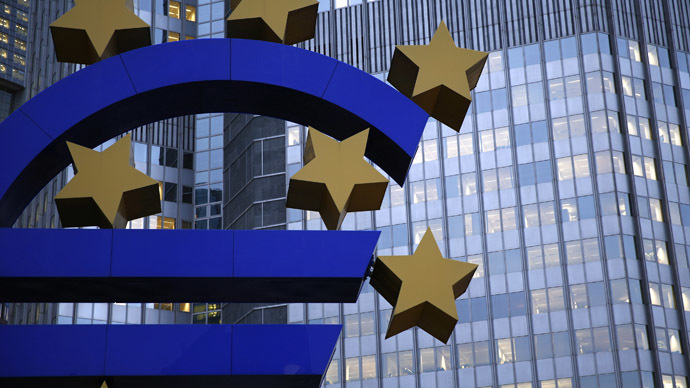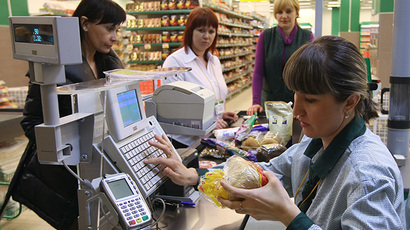Go and invest! European banks to be ‘punished’ for deposits with negative interest rate

Having run out of traditional tools to boost economic growth and push inflation towards the 2 percent target, the European Central Bank is considering to introduce a negative interest rate or purchase assets from the banks.
"If our mandate is at risk
we are going to take all the measures that we think we should
take to fulfill that mandate. That's a very clear signal",
Peter Praet, the ECB executive board member, told the Wall Street
Journal.
The negative rate on bank holdings at the ECB means that banks will receive back less than they initially deposited. It is a sort of “penalty” for holding money on account at the central bank. The measure is intended to stimulate banks to plough money back into economy rather than to hold it in reserve.
“In July 2012 the Central bank of Denmark introduced the negative interest rate on short – term deposits, seeking to stimulate banks to provide credit to the real economy, and not hold it in the central bank deposits,” Oleg Shagov, analyst from Russia’s Promsvyazbank, told Gazeta.ru.
The ECB announcement comes as the latest effort by the regulator to speed up inflation that slowed in October to mere 0.7 percent, well below the targeted 2 percent. In some of the EU countries hit by the crisis – including Greece, Cyprus and Spain – have inflation close to zero or below. Last week the ECB cut its benchmark rate to a new record low of 0.25 percent.
Another option, mentioned by Praet, includes buying the assets from banks aiming to cut the cost of borrowing in the private sector. It copies the quantitative easing that the US is now operating to make its fundamentals look healthy.
Analysts remained at odds over the effects of the proposed measures. “It’s difficult to specifically distinguish the effects from negative interest rates, because as a rule this measure is used in combination with other economic stimulus measures,” said Ivan Fomenko, a head of discretionary management at Absolut Bank.
“The Fed has increased their balance to $4 trillion, which creates risks. It’s unclear how they will get rid of those assets in the future. But one can’t say that the measure has significantly helped the economy [of the US],” concluded Olga Belenkaya, deputy head of analytical department at Sovlink.














